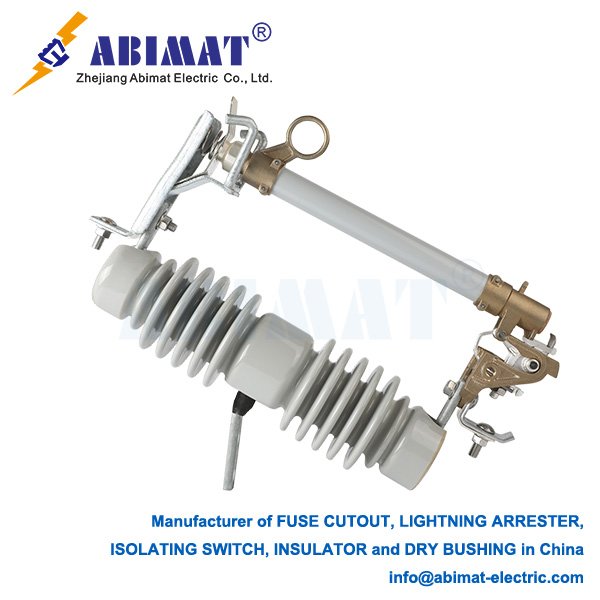Distribution Fuse Cutouts: Critical Protection in Overhead Networks
The distribution fuse cutout serves as a primary protective device in overhead electrical distribution systems. It functions as a fused disconnecting switch, delivering essential overcurrent protection, fault isolation, and visible circuit breaking for maintenance operations. This safeguards transformers, feeders, and downstream equipment.

Core Components & Operation
I. Insulator: Provides electrical isolation between live components and the grounded support structure (pole/crossarm), manufactured from porcelain or polymer.
II. Fuse Holder (Tube): A hinged assembly housing the fuse link, designed to drop open visibly (“cut out”) upon fuse operation.
III. Fuse Link: The calibrated sacrificial element melting under defined overcurrent conditions. Principal types:
Expulsion Links: Generate de-ionizing gas via a fiberglass liner to extinguish the arc post-melting.
Current-Limiting Links: Utilize sand filler for rapid arc quenching, minimizing let-through fault energy.
IV. Contacts: Maintain electrical connection between the incoming line conductor and outgoing load conductor (e.g., transformer primary).
V. Mounting Bracket: Secures the cutout assembly to pole hardware.
Primary Protective Functions
I. Overcurrent & Fault Interruption: The paramount role. Downstream faults (short circuits, severe overloads from lightning, equipment failure, or contact) induce excessive current flow. The precisely sized fuse link melts, creating an open circuit. This isolates the faulted section upstream of the cutout, preventing destructive fault currents from propagating toward substations and damaging upstream assets like transformers and main feeders.
II. Targeted Sectionalizing: Cutouts strategically segment distribution networks. A blown fuse physically and visibly isolates the specific faulted downstream section (e.g., lateral feeder, transformer tap). This enables utilities to:
Locate the fault area rapidly (identified by the open cutout).
Restore power swiftly to unaffected upstream customers.
Isolate the faulted zone safely for repair crews.
III. Transformer Protection: Standard installation on distribution transformer primaries protects against:
Destructive internal transformer faults.
Severe secondary-side faults or overloads reflected to the primary.
Operational Characteristics
Fusing Action: Passive, automatic operation based strictly on overcurrent magnitude and duration (per the link’s time-current characteristic curve).
Drop Open Design: The mechanical drop-open of the fuse holder provides unambiguous ground-level indication of fuse operation and circuit status, critical for safety and fault location.
Manual Switching: Line crews use insulated hot sticks to manually open the holder (de-energizing downstream equipment for maintenance, providing visible air gap) or close it (re-energizing after repairs/replacement).
Coordination: Fuse links are meticulously sized and typed to coordinate with upstream devices (reclosers, breakers) and downstream fuses, ensuring the closest device to the fault operates first to minimize outage scope.
Evolution & Specialized Types
Solid Material Links: Modern alloys enhance durability and performance consistency versus older tin/lead links, reducing nuisance operations.
Electronic Fuse Cutouts (EFCs): Integrate sensors, controls, and communication. EFCs deliver:
Remote fault indication/location;
Precise fault current recording;
Programmable protection curves;
Potential for automated sectionalizing/reclosing coordination.
Bay-O-Net® Links: Utilize dual series fuse elements within the tube, optimizing transformer protection. A lower-melting-point “protector” link responds to internal faults, while the main “fuse” link handles external faults.
Critical Importance
The distribution fuse cutout remains indispensable for safe, reliable, and manageable overhead distribution. Its fundamental strengths are:
Automatic Fault Isolation: Rapid damage containment.
Visual Fault Indication: Expedited crew response.
Safe Isolation Point: Facilitated maintenance.
Selective Coordination: Minimized outage impact.
Conclusion
By preventing fault propagation, enabling targeted restoration, and protecting critical assets, ABIMAT fuse cutouts are vital to distribution system resilience. Ongoing advancements in fuse link technology and electronic integration ensure their continued effectiveness within modern power grids.


